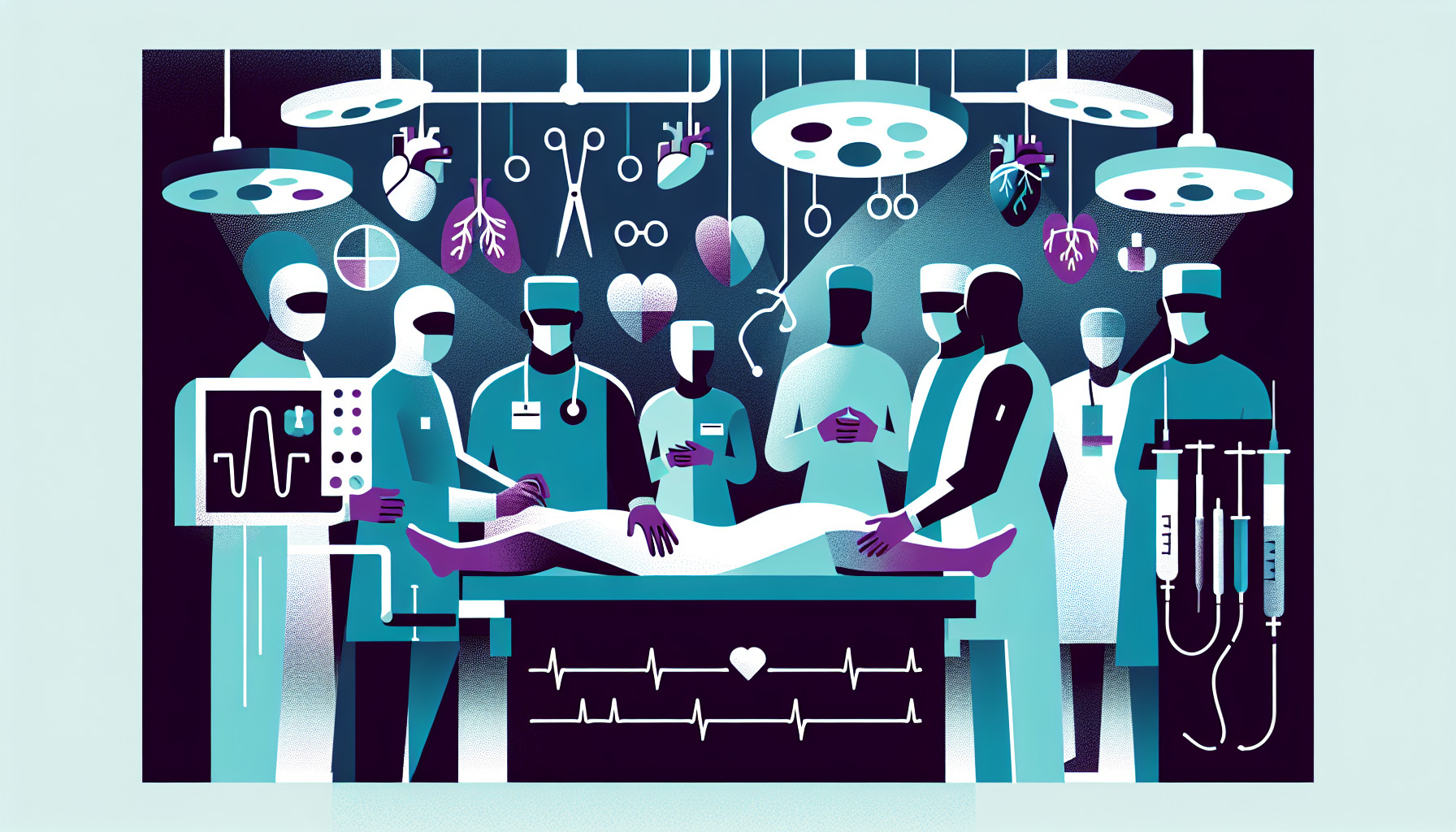Our Summary
This research paper is about the use of adipose-derived stem cells (ASCs) in transplants of hands, faces, penises, uteruses, and abdominal walls. Currently, people who receive these transplants have to take drugs for the rest of their lives to prevent their bodies from rejecting the new organ. However, these drugs can have harmful side effects. Scientists are exploring other ways to prevent organ rejection and one promising approach is using ASCs, which are stem cells taken from fat tissue. ASCs are attractive because they can be easily and non-invasively obtained in large amounts. The researchers in this paper are reviewing existing studies to understand how ASCs can help the body accept a new organ and potentially reduce the need for drugs. They are also looking at how ASCs behave once they are injected into the body, including where they go and how they interact with other cells. This information could help improve future transplant procedures and outcomes.
FAQs
- What are adipose-derived stem cells (ASCs) and why are they being used in transplants?
- How can ASCs potentially reduce the need for anti-rejection drugs in organ transplant recipients?
- What are the researchers investigating about the behavior of ASCs once they are injected into the body?
Doctor’s Tip
One helpful tip a doctor might give a patient considering vascularized composite allotransplantation is to discuss the potential benefits and risks of using adipose-derived stem cells (ASCs) in their transplant procedure. ASCs have shown promise in reducing the need for immunosuppressive drugs and improving transplant outcomes, but more research is needed to fully understand their role in the process. Patients should have an open and honest conversation with their healthcare provider about incorporating ASCs into their treatment plan and what it could mean for their long-term health and well-being.
Suitable For
Patients who are typically recommended vascularized composite allotransplantation include those who have lost function or appearance in a body part due to trauma, congenital malformation, or disease. These patients may have exhausted all other treatment options and are in need of a transplant to improve their quality of life. Additionally, patients who have experienced severe burns, amputations, or disfigurement may also be candidates for this type of transplant.
Vascularized composite allotransplantation is a complex and high-risk procedure, so patients who are considered for this type of transplant must undergo a thorough evaluation by a multidisciplinary team of healthcare professionals to determine if they are suitable candidates. Patients must be in good overall health and have realistic expectations about the potential risks and benefits of the procedure. Additionally, patients must be willing and able to adhere to a strict post-transplant care regimen, including taking immunosuppressive medications to prevent rejection of the transplanted tissue.
Timeline
Before Vascularized Composite Allotransplantation:
- Patient is evaluated by a transplant team to determine if they are a suitable candidate for the procedure
- Patient undergoes extensive medical and psychological assessments to ensure they are physically and mentally prepared for the transplant
- Patient is placed on a waiting list for a compatible donor
- Patient may undergo pre-transplant treatments to prepare their body for the procedure
After Vascularized Composite Allotransplantation:
- Patient undergoes the transplant surgery, which involves the removal of the damaged body part and the attachment of the donor tissue
- Patient is closely monitored in the hospital for any signs of rejection or complications
- Patient begins a regimen of immunosuppressive drugs to prevent rejection of the new organ
- Patient undergoes regular follow-up appointments and tests to monitor the success of the transplant
- Patient may experience complications or side effects from the immunosuppressive drugs, such as infections or organ damage
With the use of adipose-derived stem cells in vascularized composite allotransplantation:
- Researchers are studying the potential use of ASCs to reduce the need for immunosuppressive drugs and improve transplant outcomes
- ASCs may be injected into the body to help promote acceptance of the new organ and reduce the risk of rejection
- Researchers are investigating how ASCs interact with the body and other cells to optimize their effectiveness in transplant procedures
- The use of ASCs could potentially revolutionize the field of vascularized composite allotransplantation and improve the quality of life for transplant recipients.
What to Ask Your Doctor
- What is vascularized composite allotransplantation and how does it differ from traditional organ transplantation?
- What are the potential benefits of using adipose-derived stem cells (ASCs) in transplant procedures?
- What are the potential risks or limitations of using ASCs in vascularized composite allotransplantation?
- How do ASCs help the body accept a new organ and reduce the need for immunosuppressive drugs?
- What is the current status of research on ASCs in transplant procedures and what are the potential future developments in this field?
- What is the process of obtaining ASCs from fat tissue and how are they prepared for use in transplantation?
- How do ASCs behave once they are injected into the body and what interactions do they have with other cells?
- What are the potential implications of using ASCs in vascularized composite allotransplantation for patient outcomes and long-term health?
- What are the criteria for selecting patients for ASC-based transplant procedures and how does this differ from traditional transplant criteria?
- Are there any ongoing clinical trials or research studies related to ASCs in transplant procedures that patients should be aware of?
Reference
Authors: Pappalardo M, Montesano L, Toia F, Russo A, Di Lorenzo S, Dieli F, Moschella F, Leto Barone AA, Meraviglia S, Di Stefano AB. Journal: Ann Plast Surg. 2019 Feb;82(2):245-251. doi: 10.1097/SAP.0000000000001763. PMID: 30628936
